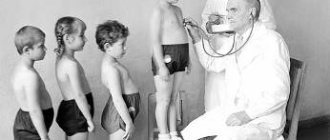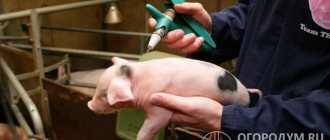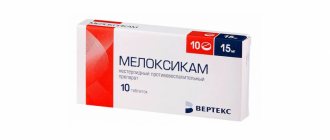In 2014, according to Rosstat, 95.6% of newborns were vaccinated against tuberculosis (in 2013 it was also 95.6%); 96.5% (in 2013 - 97.3%) of children under one year of age were vaccinated against diphtheria, 96.3% (in 2013 - 96.9%) - against whooping cough, 97.6% (in 2013 - 97.6%) - from polio; 97.8% (in 2013 - 98.1%) of children under two years of age were vaccinated against measles, 98.1% (in 2013 - 98.1%) - against mumps.
According to Rospotrebnadzor, in 2015, 95.8% of newborns were immunized against tuberculosis, and 97.4% of children under one year of age were immunized against polio; 97% of children received three vaccinations against viral hepatitis B upon reaching one year of age (in 2014 - 96.6%, in 2013 - 97.3%); from whooping cough - 96.8% of children aged one year and 96.42% of children aged two years.
In recent years, the number of Russians receiving flu vaccinations has increased significantly. If in 1996 there were 4.9 million, then by the beginning of the 2015-2016 epidemic season. 44.92 million people were vaccinated (31.3% of the total population of the Russian Federation). On the eve of the autumn-winter season 2015-2016. More than 13.3 million children were immunized (47.6% of the total child population under 17 years of age).
Complications from vaccination
Accounting and control over the number of complications as a result of vaccination has been carried out only since 1998. Such work is carried out by national specialized scientific institutes, but they study the situation only in a limited number of settlements, mainly in large cities. There are no general official statistics on complications and deaths after vaccinations in Russia. Along with this, over the past 50 years, experts have observed an increase in complications from the BCG (against tuberculosis) and DTP (adsorbed pertussis-diphtheria-tetanus) vaccines. According to medical statistics, approximately 500 people in Russia have an acute reaction to vaccination every year.
In 2015, the Federal Service for Healthcare Surveillance (Roszdravnadzor) identified 172 cases of adverse reactions and complications when using vaccines in 38 Russian regions (including Moscow and St. Petersburg). Including 61 cases when using an inactivated vaccine to prevent influenza, 35 cases - vaccines to prevent viral hepatitis B, diphtheria, whooping cough and tetanus, 18 cases - vaccines to prevent pneumococcal infection, 10 cases - vaccines to prevent tuberculosis, 9 cases - vaccines for the prevention of polio, 7 cases - vaccines for the prevention of viral hepatitis B.
ROLE OF VACCINATIONS in the prevention of INFECTIOUS diseases
Infectious diseases are a group of diseases caused by the penetration of pathogenic (disease-causing) microorganisms into the body. This group includes such serious diseases as malaria, rubella, measles, whooping cough, viral hepatitis, influenza and other acute respiratory diseases, mumps, dysentery, salmonellosis, diphtheria, plague, cholera, brucellosis, botulism and many others.
These diseases have been known to mankind since ancient times. Epidemics of “pestilence diseases” covered vast territories, including entire states and peoples, and their prevention and control at all times represented the most serious public problem.
Prevention of infectious diseases and their spread includes the following measures:
- increasing the body's resistance through hygiene and physical education;
- carrying out preventive vaccinations;
- quarantine measures;
- cure the source of infection.
The most effective method of preventing infectious diseases is vaccination .
VACCINATION is the introduction of weakened or destroyed pathogens into the body in the form of a vaccine. The task of vaccines is to “introduce” the human body to the infection before the body encounters the “wild” virus. Vaccines use either components of microbes and viruses, or microorganisms that are greatly weakened and devoid of all dangerous properties.
How does the vaccine work?
From the point of view of the immune system, any substance that enters the body is foreign. And almost any foreign substance is a so-called “antigen”, that is, it is capable of causing an immune response in the body. After vaccination, in response to vaccine antigens, the body begins to produce antibodies - special substances that can fight the virus of a particular disease. Having protective antibodies in sufficient quantities, a person becomes immune to the disease against which the vaccine was given. Some vaccinations need to be given once in a lifetime - full immunization - while others need to be repeated regularly.
The idea of vaccination appeared in China in the 8th century AD, when humanity was trying to save itself from smallpox. The idea was that surviving an infectious disease could prevent this disease in the future. Therefore, the inoculation method was invented - transfer, or preventive infection with smallpox by transferring smallpox pus through an incision.
In Europe, this method appeared in the 15th century. A great contribution to the development of vaccination was made by the French chemist Louis Pasteur, who worked in bacteriology. He proposed a new method to weaken the infectious disease. This method paved the way for new vaccines. The method proposed by Pasteur consisted of successive dilutions of the disease product, which contained the pathogen, in order to weaken it. In 1885, Pasteur vaccinated against rabies the boy Joseph Meister, who was bitten by a rabid dog. The boy survived. This became a new round in the development of vaccination.
Every year, 130 million children are born around the globe and approximately 12 million children die between the ages of 1 week and 14 years. About 9 million die from infectious diseases, 3 million from infections for which effective vaccines are available.
Today, vaccination is the only reliable way to avoid infectious diseases and the complications they cause. Currently, 80% of the world's child population is vaccinated, which helps save 3 million lives annually and prevent the development of severe complications from these infections.
In the 20th century, outstanding scientists developed and successfully used vaccinations against polio, hepatitis, diphtheria, measles, mumps, rubella, tuberculosis, and influenza. Currently, new vaccines have emerged, such as the vaccine against cervical cancer.
The safety of modern vaccines that meet international standards of purity and effectiveness is not in doubt. The effectiveness of vaccination is clearly demonstrated by the example of individuals in high-risk groups.
In modern medical practice, various types of drugs are used to form protection against infections:
* Live vaccines - consist of specially grown living microorganisms (bacteria, viruses). When they enter the body, they do not cause the development of an infectious disease, since they are devoid of aggressive properties. But at the same time, they form strong and long-lasting (sometimes lifelong) immunity. Live vaccines are used to create immunity against measles, mumps, rubella, chickenpox and other infections.
*Killed ( inactivated ) vaccines - consist of specially grown killed microorganisms (bacteria, viruses). Inactivated vaccines are used to create immunity against whooping cough, influenza and other infections.
*Vaccines that do not contain a whole microorganism , but only its individual components (antigens). These include vaccines for the prevention of viral hepatitis B, acellular (cell-free) vaccine against whooping cough, etc.
The causative agents of some infectious diseases (diphtheria, tetanus, etc.) when they enter the human body, release toxins that determine the symptoms and severity of the disease. Toxoids are used to prevent the development of severe forms of such diseases and deaths. They are produced by special processing of toxins to deprive them of their toxic properties and preserve their immunity-building properties.
We are on the threshold of the emergence of a new generation of vaccines.
If the purpose of classical vaccines is to teach the immune system to recognize a weakened or dead enemy for the purpose of prevention, then therapeutic vaccines are designed to help already initiated patients, when the body has already entered the battle with the virus.
REMEMBER!
ANY VACCINATION IS HUNDREDS OF TIMES SAFER THAN THE DISEASE IT PROTECTS AGAINST.
Deputy Chief Physician for Medical Affairs Kisel I.V.
Cases of vaccination complications since 2010
In December 2010, a 5-month-old girl died in Omsk the day after being vaccinated against hepatitis and polio. The child's death occurred as a result of acute respiratory failure.
In May 2010, law enforcement agencies in the Amur region began investigating the causes of death of a 1.5-year-old girl who died after being vaccinated against polio. The official cause of death is hemolyticouremic syndrome.
In April 2010, in the Yaroslavl region, 70 children and 10 adults consulted doctors after being vaccinated against tick-borne encephalitis.
In January 2012, a one-month-old girl died in Khakassia on the second day after being vaccinated against hepatitis B.
On September 18, 2013, students of a secondary school in the village of Melekhino, Berdyuzhsky district, Tyumen region, were vaccinated against tularemia. The next day, due to deteriorating health, 33 children were hospitalized in the regional hospital.
On October 7, 2013, a pediatrician and a nurse from the Yakovlevsk Central District Hospital of the Primorsky Territory conducted tuberculin diagnostics for 45 schoolchildren in the village of Novosysoevka. The vaccine was administered without the consent and notification of the schoolchildren's parents. At the same time, the permissible doses of the drug were exceeded by 2.5 thousand times. As a result, 28 children were hospitalized, of which 11 schoolchildren were sent for examination to Moscow. Based on the fact of the children’s illness, a criminal case was initiated under Art. Criminal Code of the Russian Federation “negligence”.
In December 2015, in one of the secondary schools in the city of Bezhetsk, Tver Region, a medical assistant, while conducting a Mantoux tuberculin test, mistakenly administered an anti-tularemia vaccine (live dry) to 10 11th grade students intradermally into the left forearm. As a result of an adverse reaction to the drug, the teenagers were hospitalized.
In August 2021, a post-infectious abscess was caused by a vaccination against diphtheria, whooping cough and tetanus (DPT vaccine) given to three children at the Verkhnedubrovsk outpatient clinic in the Sverdlovsk region.
Basic provisions
Preventive vaccinations according to epidemic indications are carried out to citizens when there is a threat of infectious diseases, which are determined by a special list. The decision to carry out such vaccination is made by the chief state sanitary doctor of the country and the chief sanitary doctors in the regions. Vaccinations are given in medical organizations that have a special license to carry out immunoprophylaxis of this kind. Moreover, only employees who have undergone special training in the use of immunobiological drugs to prevent infectious diseases can be vaccinated. They are also additionally familiarized with the nuances of vaccination and are aware of all the intricacies of providing first aid in an emergency or urgent situation.
Vaccinations for epidemiological indications, which are provided for by the national calendar, must be registered taking into account the nuances of Russian legislation and instructions for their use.
To everyone who is going to receive such preventive vaccinations, doctors explain the need for immunoprophylaxis, and also describe the possible consequences and reactions. Naturally, before receiving the vaccine, a person must be examined by a doctor.
Interrupted course. Is it possible to violate the vaccination schedule? More details
The issue of introducing compulsory vaccination of children
Recently, WHO has become concerned that parents have begun to refuse to immunize their children. The problem is relevant for the whole world, including Russia.
In April 2021, Deputy Head of the Ministry of Health of Tatarstan Farida Yarkaeva reported that the republic was considering introducing compulsory vaccination for children without the right of refusal.
In May 2021, the children's ombudsman of the Yamalo-Nenets Autonomous Okrug, Vitaly Oreshkin, spoke out against the suspension of students from classes due to the lack of a Mantoux test. In his opinion, parents have the right to refuse tuberculin diagnostics.
On August 7, 2021, the head of Rospotrebnadzor Anna Popova stated that the possibility of introducing legal liability for parents for refusing to vaccinate their children is currently being considered.









